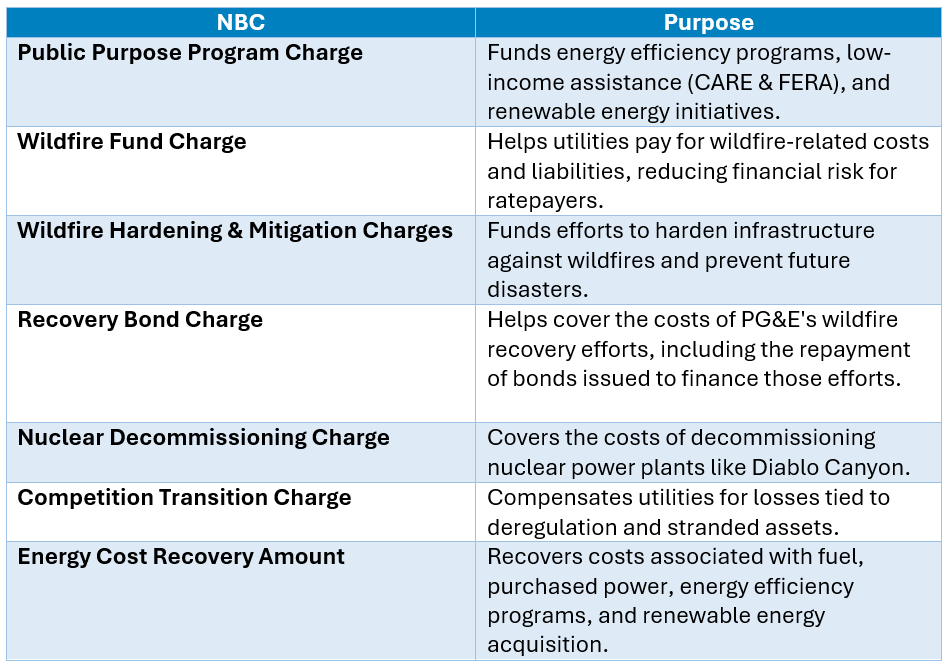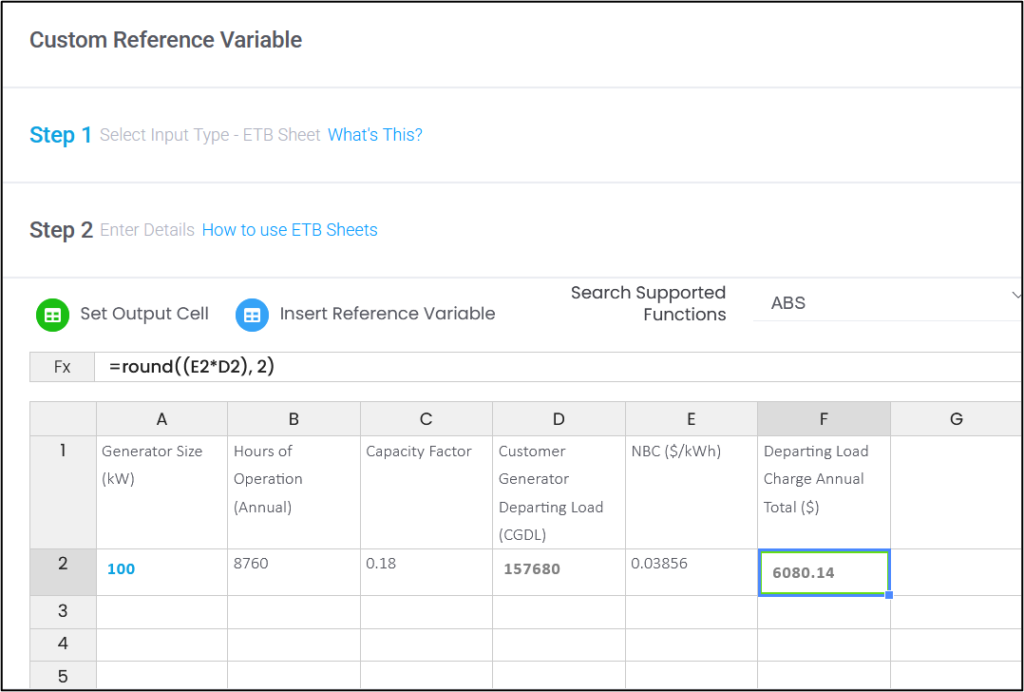As the number of self-generation and non-export systems continues to grow in California, developers should be aware of additional charges that customers may be required to pay to the investor-owned utilities (IOUs) in the form of Departing Load Charges (DLCs). DLCs are billed to customers that either reduce or completely replace their purchase of electricity from the IOU that services them. These charges have been around for a while but have become more prevalent following the release of NEM 3.0 and the expansion of non-export systems. We’re going to explain what these charges are, how they are calculated, what kind of impact they have, what exemptions exist, and how we handle it all in ETB Developer.
What are Departing Load Charges?
DLCs are billed to customers that either partially reduce their load from an IOU or completely replace their load with direct access purchases, community choice aggregation, or customer generation. A customer’s reductions or changes in load are referred to as Customer Generation Departing Load (CGDL), and the IOUs can still bill DLCs for this reduction or replacement of load. DLCs are meant to cover stranded costs like long-term power contracts for departing customers as originally planned based on that customer’s expected energy usage and demand. DLCs are billed as an aggregation of non-bypassable charges (NBCs) and include the following:

The charges for these NBCs vary based on a customer’s rate schedule and are found in the tariff sheets provided by the IOUs.

How the Customer Generator Departing Load is Calculated
Currently, there is little uniformity in standards across the IOUs for how they calculate a customer’s CGDL. This will likely change as more non-export systems are installed and a more cohesive rule set is needed; however, in the meantime, here are the options available from each IOU for how they handle these calculations:
Pacific Gas & Electric
PG&E requires departing customers to fill out this form that offers customers six different options for how their CGDL is calculated.
- Option 1: Demand and energy usage over the previous 12 months.
- Option 2: Average 12-month demand and energy usage over the previous 3 years.
- Option 3: Average 12-month data based on the expected annual energy production for the generating facility as declared in the Generation Facility Interconnection Agreement.
- Option 4: Actual usage based on future meter data provided by a net electric output meter.
- Option 5: Capacity factor estimate for partial load departure based on the following formula: [Generator Size (kW) x Hours of Operation (monthly) x Capacity Factor = Monthly Departing Load Estimate].
- Option 6: Calculated on-site departing load estimate for oversized generating facilities participating in the Schedule RES-BCT
Southern California Edison
- With a Net Generation Output Meter (NGOM): Departing Load equals the monthly kWh registered by a NGOM.
- Without an NGOM: Departing Load is calculated based on the monthly average kWh usage prior to the operation of the generator minus the current billing month’s usage.
San Diego Gas & Electric
- The customer’s demand and energy usage over the 12-month period prior to qualifying for Departing Load.
- The customer’s average 12-month demand and energy usage measured over the prior 36-months of usage, with such average to be as measured over the prior 36-months of usage.
PG&E uses a capacity factor of 18% for its Option 5 calculations, and as of right now, neither SCE nor SDG&E have something like Option 5 that uses capacity factor and generator size to calculate CGDL.
What’s the Impact of Departing Load Charges?
To determine the impact of DLCs, you’ll need to multiply the total $/kWh rate of the current NBCs by a customer’s calculated CGDL based on the option they select. Let’s take PG&E’s Option 5 as an example and assume a scenario involving a customer on rate schedule B-19 with a 100 kW non-exporting system. Following the formula for Option 5, we get a calculation for a monthly CGDL that looks like this:
100 kW * (30.4 days * 24 hours) * 0.18 = 13,132.8 kWh
Then multiply the CGDL by the total $/kWh rate for the NBCs of the B-19 rate schedule (seen in the table above):
13,132.8 kWh * $0.03856/kWh = $506.40
The $499 total is the amount to pay for DLCs per month—multiply this by 12 to get the annual total:
$506.40 * 12 = $6,076.81
Exemptions From Depart Load Charges
There are some exemptions from DLCs that exist for certain customers. Generating systems that are islanded, meaning they operate independently of the grid, are generally exempt from DLCs. Other exemptions exist for customers enrolled in programs like California Alternative Rates for Energy, Family Electric Rate Assistance, and Medical Baseline. More information about these exemptions is available in PG&E’s Schedule E-DCG under the RATES section. We recommend reviewing the relevant IOU’s website to determine which exemptions may apply to you.
How to Handle Departing Load Charges in ETB Developer
Currently, we account for DLCs by using ETB Sheets in the transaction feature in ETB Developer. This feature offers spreadsheet capabilities that allow users to use reference variables to perform the calculations needed for the different departing load options from the IOUs. Let’s look at how to do the same PG&E Option 5 calculation from earlier but in ETB Sheets. The only difference is that we need to convert the hours of operation for the formula from monthly to annually in a transaction, which looks like this:

We’re following the IOUs closely for any new developments regarding DLCs, and we’ll provide updates as new information becomes available. We recommend getting in touch with your Account Manager to assist you in setting up a transaction that accurately accounts for DLCs. We offer a 14-day free trial of ETB Developer so you can start modeling and handling these complexities for your projects.



